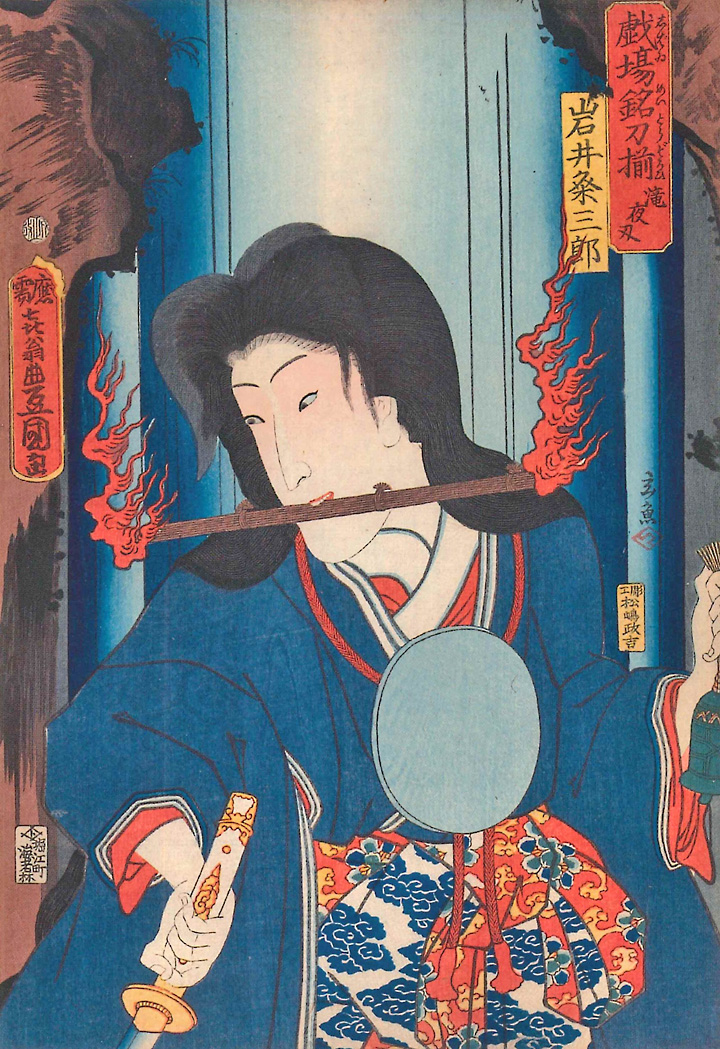Female kabuki performers barred by Edo shogunate
Japan through The Five Srnses -Inquiries by Foreign Students
Updated on Oct 03 2016
On June 17th, foreign students from Kokugakuin University visited Kokuritsu Gekijou(国立劇場), a traditional kabuki theater. Kabuki(歌舞伎) is a traditional Japanese form of theater with roots tracing back to the Edo Period.

戯場銘刀揃 滝夜叉 Takiyasha,Gijo Meito soroi 歌川豊国(三代)画(private collection)
Q.Why do kabuki actors play female roles?
A.Female kabuki performers barred by Edo shogunate
It is said the founder of kabuki was a woman named Okuni who gave dance performances in Kyoto about 400 years ago. She is said to have gained immense popularity by performing in men’s clothes and bizarre attire, prompting people to call her style “kabuita” (warping), a word that meant “offbeat appearance and speech.” Against this background, the term “kabuki” is thought to have derived from “kabuita.”
Back then, many prostitutes and female performers emulated Okuni’s style themselves. In 1629, the Edo shogunate, worried that “onna” (all-female) kabuki had corrupted public morals, banned females from kabuki. Ever since then, all-male casts have become the norm for kabuki.
The kabuki actors who play female roles are called “onnagata” or “oyama.” They inherit a four-century-old tradition of harsh lessons and family, which is carried on even today.

published in The Japan News on 3/10/2016
Murasaki FUJISAWA
Research
History of Japanese art, History of early-modern Japanese culture, Comparative Studies in Art
Papers
Yamato-e and the Reception of Rinpa in Ukiyo-e; Moronobu,Harunobu,and Hokusai(2014/05/30)
Discussion Hall : Ukiyoe : Over the Seas, and Over Time(2019/09/)

